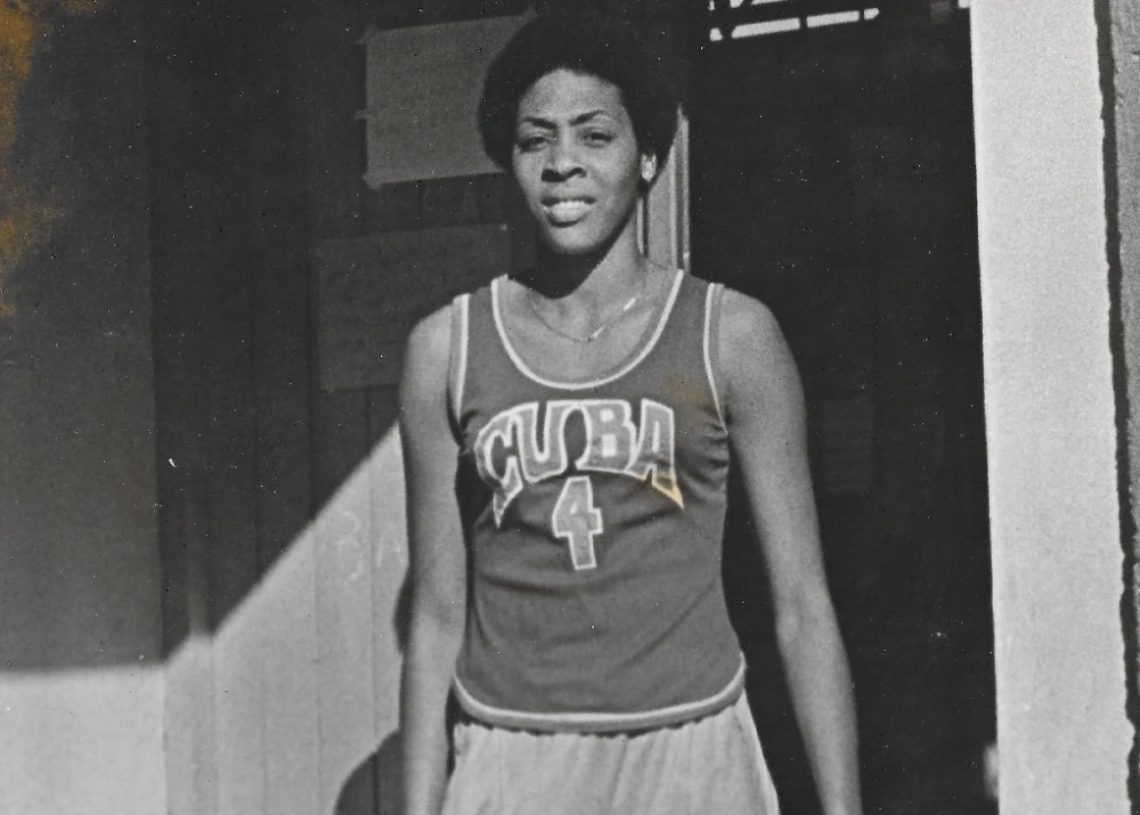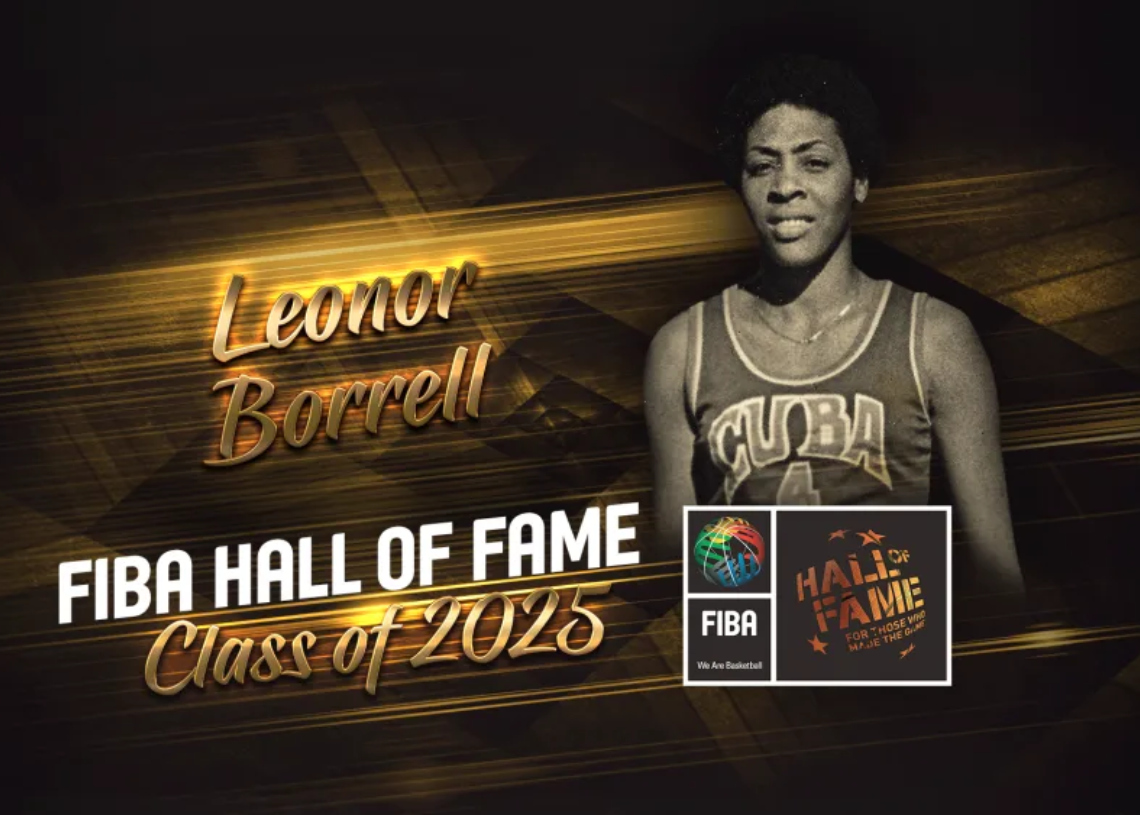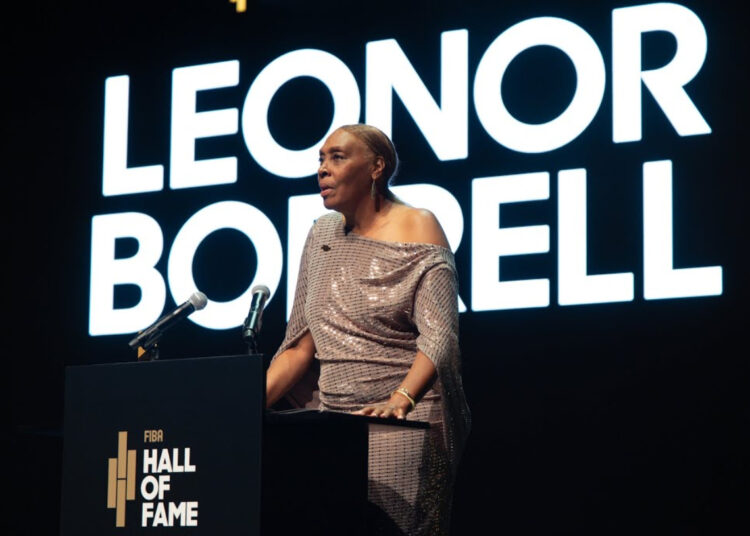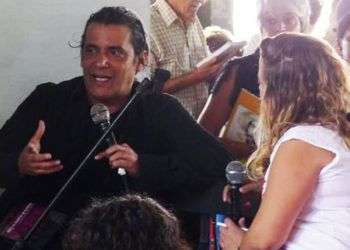At 108 Mujica Street in Santa Clara, Luis Rodríguez Crespo built a shrine to Cuban sports. “The Collector,” as he is known, created more than fifty albums dedicated to Cuban and international athletes after collecting countless newspaper and magazine clippings over the years. I discovered those treasures sometime in 2014 or 2015, and one of the books that most caught my eye was the one about Leonor Borrell, considered by many to be the best Cuban basketball player in history.
The images of that six-foot-tall “tower” rising above all the courts were imposing, as were the stories told about her, from her debut on the national team at just 16 to her MVP awards in four Pan American Games and her top scorer crown at the 1986 World Cup.
Likewise, the headlines in the publications took me on a journey back in time to a period of absolute splendor for Cuban basketball, part of its most profound past. “Cuba, world bronze in Malaysia,” read one of the headlines, referring to the only world medal won by a women’s team in 1990. That line seemed straight out of a fiction film, because the sport of basketball on the island was no longer enjoying the same health.
However, the name “The Menace of the Baskets” — as she was known — only vaguely resonated with me, perhaps because she wrote her story in a time I hadn’t experienced. I remembered more her brother, Lázaro Borrell, a true phenomenon who shone in the Higher League with Centrales and later emigrated to the United States to become one of only two Cubans with a contract in the NBA.
Regarding Leonor, on the other hand, I didn’t have many references. Her career and achievements were rarely discussed compared to the great stars of boxing, baseball, and track and field who shone for Cuba in the fruitful decades of the 1980s and 1990s.
That’s why Luisito “The Collector’s” album immediately caught my attention, as did the book “Medallas al Corazón” by my colleague Joel García, which features an interview with Borrell. In those pages, I found more details about her career and was surprised to find that her beginnings in the sport were “on the spur of the moment.”
“Every day on my way to school, I would pass by a basketball court next to my home. Since I was very tall for my age — I was 1.62 meters tall at 9 years old — coach Rafael García Cañizares, better known as Abdala, would tease me with an inviting phrase: ‘Goodbye, basketball player.’ If I said I liked sports, I’d be lying. I was a girl who preferred skating, playing jacks, riding a bike, climbing trees, and swimming in rivers,” she recounted in the aforementioned book.

There, she also recounted the bitter moments she experienced after her brother Lázaro decided to emigrate, an event that changed her life, to the point that she wasn’t even included among the 100 best athletes of the century on the island, despite having all the merits.
“It’s a story I’ve never been able to tell. He never stopped being my brother, and he was a basketball player because of me, because he wanted to be a baseball player. I didn’t cover up or share his actions in staying in another country, but the dimension that was given to it meant stripping my career of any validity, as if nothing had happened in my 20 years of basketball, and as if I were to blame for such behavior.
“Being left off that list isn’t the most important thing; it’s that Cuban basketball in the 20th century apparently didn’t exist, because not even Pedro Chappé, Ruperto Herrera, and Margarita Skeet were on the national team, with Olympic and world medals included. It was an injustice, not to me, but to that sport,” she said.
The immortality award
Almost 30 years after her retirement, Leonor Borrell is a member of the International Basketball Federation (FIBA) Hall of Fame. Last January, she received notification of her induction, and this Sunday, May 18, in Bahrain, she received the award that certifies her as one of the immortals of the world’s basketball courts.
“I still can’t believe it, but it’s a reality and I’m really enjoying it,” said Borrell, visibly moved after officially becoming the second Cuban in this hall of fame. Before her, Ruperto Herrera, the 1972 Olympic bronze medalist, was inducted in 2015.
Almost speechless during the ceremony, Leonor thanked her parents, mentors, and eternal admirers, and her daughter Denise, with whom she has experienced the “beautiful and challenging” experience of becoming a mother. She also made a special mention of her siblings, including Lázaro, who had gone with her to Bahrain.
“This is an unexpected honor. When I got the news, I couldn’t believe it, but my brother took it with even more enthusiasm,” she stated.
One of the most moving moments of her speech came when she acknowledged those who had accompanied her on the courts, demonstrating her loyalty to the collective spirit that must always prevail in basketball: “Infinite thanks to all my teammates, from Santa Clara to the Cuban national team. This recognition bears my name, but it belongs to all of us. Together we experienced victories and defeats, and this Hall of Fame is for them as well.”
The 2025 Hall of Fame class includes, in addition to Leonor Borrell, true stars of the court. Leading this elite group in world basketball is Spaniard Pau Gasol, a legend of the NBA and the Soanish national team who won three Olympic medals and the World Cup gold medal in 2006. Also honored are Alphonse Bilé (Ivory Coast), Andrew Bogut (Australia), Ticha Penicheiro (Portugal), Ratko Radovanovic (Serbia), and Americans Dawn Staley and Mike Krzyzewski, the latter as a coach.

FIBA Secretary General Andreas Zagklis had words of praise for them: “FIBA has established the Hall of Fame to honor those who made the game. They were 192 and now they are 200 with this very special class of 2025. We have been blessed to witness these 8 incredible personalities.
“On behalf of FIBA, thank you. You are not only Hall of Famers, you are forever distinguished members of the FIBA Family, and you are an inspiration for the generations to come.”
Leonor Borrell in the experts’ viewer
Following Leonor Borrell’s induction into the Hall of Fame, we consulted four long-time sports journalism experts about the Villa Clara native’s career, her legacy, and her impact on the history of Cuban basketball.
Charly Morales
“To highlight Leonor Borrell’s merit, just look at her classmates: Dawn Staley, Pau Gasol, Andrew Bogut, all brilliant at the national team level, but whose selection was also influenced by their performance in places where the Cuban player couldn’t shine, namely the professional leagues. I have no doubt about the impact Borrell would have had as a power forward in Italy, Russia, or Spain…perhaps the WNBA?
“She always reminded me of Cheryl Miller, due to her versatility in scoring, being a traditional center, but also capable of playing with a good eye for the rim and with a great mid-range shot. Add to that her leadership and the fact that she set a precedent in her position for other good tall players who followed her, like Yamilé Martínez.
“An aside: shortly after I started working at Prensa Latina, when I was on the fifth floor of the Ministry of Public Health (MINSAP), one day I was horrified to see Leonor selling fritters next to the DiTú at the La Rampa fair, even though she’d already been given an apartment on Fama y Aplausos (infanta and Manglar streets). I mentioned this to a journalist from the National Institute of Sports and Recreation (INDER), and his response was, ‘So? She has to pay for what her brother did.’ It’s just Cuban stuff. At the time, I couldn’t imagine the greatest basketball player in Cuban history having to do that.”
Héctor Miranda
“I always followed Leonor Borrell because, during the first part of my life when I studied in Santa Clara, she was a sensation, the most dominant player in Cuban women’s basketball. She was unmatched. Near the courts, she grabbed all the offensive and defensive rebounds and drove the team. That Villa Clara team with her was very dominant, they almost always won, even though Havana City had Bárbara Becker, Margarita Skeet, and other good players.
“In international competitions, I remember the 1986 World Cup in the Soviet Union, where she was the leading scorer ahead of China’s Zheng Haixia, a beast of a player who was over two meters tall and weighed 100 kilos. Leonor would have easily been a WNBA player in the United States, because in addition to being good on the courts, she also moved well on them.”

Ricardo López Hevia
“Talking about Leonor Borrell is talking about the best Cuban basketball player of all time. She led a generation that, without a doubt, can still boast today of being the most successful in the world of women’s basketball. She was a highly competitive athlete, with an excellent mid-range shot, combined with good movements under the rim and a tough defense. For all of these reasons, she earned credit as the most comprehensive.
“She also provided leadership. In epic moments, she was the one who always called for the ball and found solutions for the team. I remember her stunning drives to the basket with great strides; she left opponents in their wake with tremendous ease. A quiet, serene woman, always focused on her game. She dominated basketball for a long time in the Central American and Pan American games, during a time of great players in the United States and Brazil. She was the difference-maker on those Cuban teams, which also had other very skilled and confident stars.”
Raúl Rodríguez
“Leonor combined skill, intelligence, and elegance on the court. She was a powerhouse. She was the leader of an exceptional generation of Cuban women’s basketball, which achieved feats such as a world medal and a victory over the powerful United States team at the Pan American Games.
“Although she was a player who thought of the team first, individually she was always among the top scorers in every tournament she participated in, including the 1986 World Cup.
“She said she was surprised, but her induction did justice to a player who, in addition to her virtues on the court, stood out for her discipline, dedication and commitment. It is also a recognition of Cuban women’s basketball, which in the 1970s, 1980s and 1990s stood up to the best in the world.
“The significance of her award has been such that, although Leonor and her family emigrated to the United States several years ago and reside in Miami, the cradle of exile, the Cuban press echoed the news and even the country’s president himself congratulated her, an unusual event for athletes and personalities who emigrate.”









